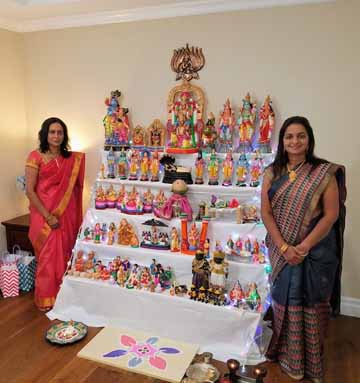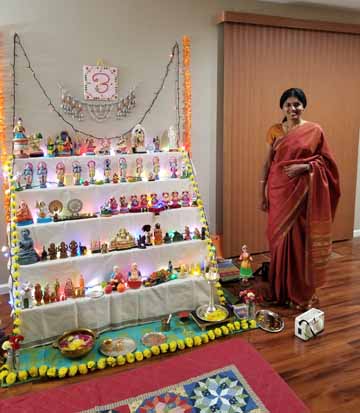
FREMONT, CA: Navratri is a ten-day long festival in India that represents the diverse nature of India in the most unique way. The festival is primarily dedicated to different forms of Shakti but the ways of celebrating this glorious festivity is very different in various Indian states. The Hindu festival is observed as Durga Puja in the eastern states while people in Gujarat worship a holy clay pot called Garbo during this festival. Similarly, South India associates Navratri celebrations with the assembly of Golu or Bombe Habba while the northern states associate Navratri mainly with Ram Leela.
Bomma Golu/ Bombe Habba is a doll and figurine display festival celebrated during the festival of Navratri in Southern India. It is customary in the states of Tamil Nadu, Karnataka, Andhra Pradesh. Bommai (Doll) Golu is the artistic display of dolls on numbered tiers or steps, usually made of wood. There are many stories about the origin of Golu. One of them has a significant connection with agriculture.
It is said that in order to encourage de-silting of irrigation canals, Golu was celebrated to create demand for clay materials. Golu is symbolic of the feminine power and symbolizes that everything on earth has one creator. Another mythological story behind this festival is that when Durga wanted to kill an evil demon Mahishasur but didn’t have enough strength to do it by herself, she asked all gods and goddesses to transfer their strength to her. They all did that and stood still as statues. This festival is celebrated to acknowledge their sacrifice. Another reason to celebrate the festival in the olden days was to give women a chance to go out and mingle with the neighbors.
As per tradition, Golu is celebrated by arranging figurines of gods and goddesses on steps to narrate mythological stories. Traditionally, a few top steps include idols of gods and a Kalash (ceremonial jar) with fresh water, covered with a coconut and mango leaves.
The next few steps have idols of saints and heroes of the country. Another step represents human activities, depicting functions such as marriage, temples, and an orchestra or music band. The number of steps of Golu is usually an odd number and can be 3, 5, 7, 9 or 11 based on personal preferences.

The Indian festival of Navratri, which runs until Sept. 30, is being celebrated with traditional joy and feasting all over Bay Area. Today the practice is rampant in the Diaspora with immigrant families treasuring and continuing age-old cultural customs for the sake of the younger generations. Friends and family are invited to view the Golu, to sing or demonstrate an art form, partake of the prasadam (an edible offering first made to the deity), and to linger and enjoy the hospitality of the hosts over a vegetarian meal.
The sheer joy, pride, and creativity that goes into keeping the kolu makes it nothing short of a labor of love. The dolls are often collected over the years, brought from India, purchased online, or specially commissioned for themed kolus; many households have antique dolls that were handed down through the generations.
Golu is equally relevant because many children today do not know the stories of the epics. In this gadget era, children seem to be losing the art of imagination with all the digital visual content. And the Golu or Gombe tradition is one of the best ways to keep these stories alive because the dolls offer the visuals as you tell them the stories, says Revathi Sreedar, a Bay area resident. During the evening of Vijayadasami, any doll is symbolically put to sleep and the Kalasa is moved a bit towards North to mark the end of that year’s Navaratri Kolu.
Vidya Sethuraman
India Post News Service






